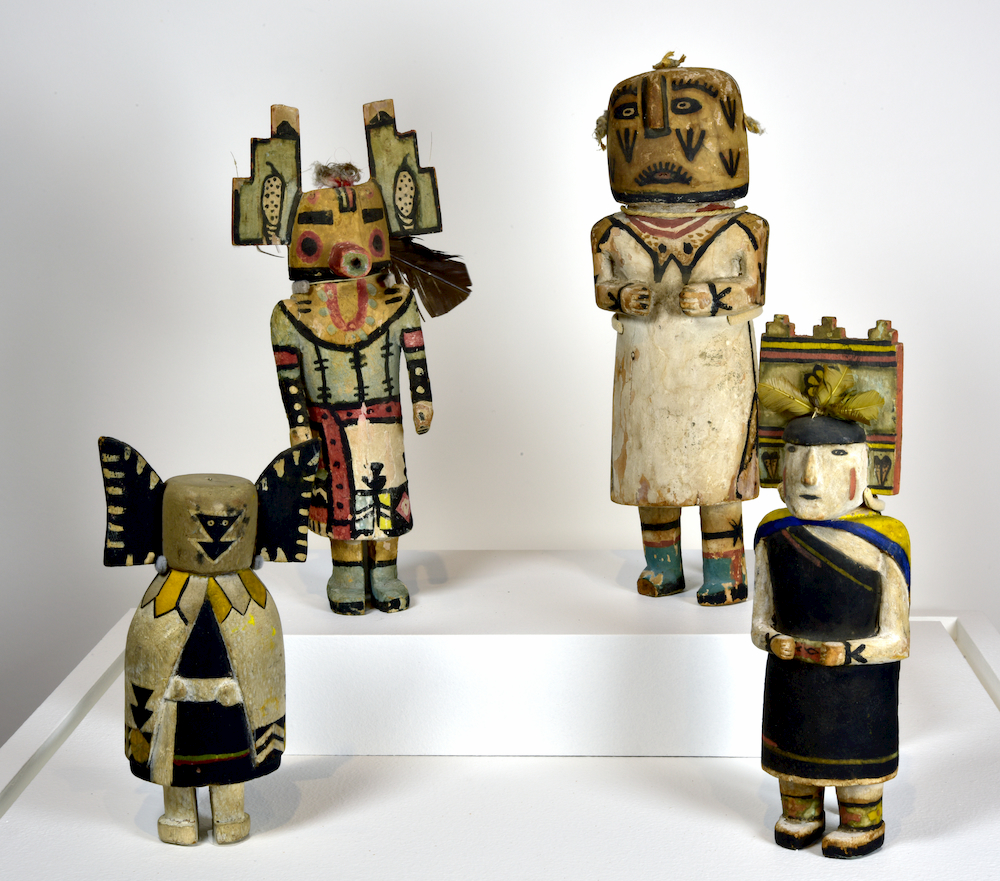Katsinam

In the beliefs of Pueblo peoples, Katsinam represent spiritual beings manifested as supernatural beings, ceremonial dancers, or figurative dolls. Over 400 different Katsinam personify the forces of the cosmos and/or of the natural world. Although not worshipped, each Katsina is viewed as a powerful being. The carved doll forms are used to educate children in the teachings of their cultures and ethical principles regarding good behavior.
Angwusnasomtaka (Crow Mother), 1900-1920, for example, is considered the mother of all Katsinam. Adorned with a mask and a headdress of crow wings, she wears traditional Hopi attire, exemplifying both her spiritual power and her human-like characteristics. Wilson Tewaquaptewa, unique among Katsina carvers and one of the earliest documented, maintained the religious conviction that accurate versions of Katsina should not be sold to the increasing numbers of researchers and tourists visiting Hopi lands. Consequently, he deliberately distorted Katsina attributes, producing whimsical and playful carvings as in Katsina (Kachina), c. 1925.
